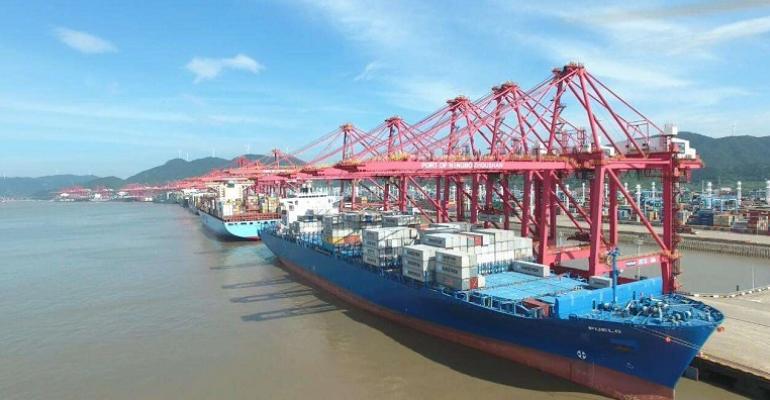By ZHU WENQIAN and ZHONG NAN | CHINA DAILY | Updated: 2022-05-10
China has freed up the coastal piggyback system for shipping of foreign trade containers between ports within China, enabling foreign logistics giants such as A.P.Moller-Maersk and Orient Overseas Container Line to plan first voyages by the end of this month, analysts said on Monday.
The move highlights China’s willingness to further its opening-up policy, they said.
Meanwhile, the administrative committee of Shanghai’s Lin-gang Special Area of China (Shanghai) Pilot Free Trade Zone said at a news conference on Monday that China will introduce a container freight forward rate contract trading platform.
Despite a complex international situation and given the impact of the COVID-19 pandemic, the Yangshan Special Comprehensive Bonded Zone in Shanghai has encouraged enterprises to resume production, and the business in the bonded zone has operated smoothly in the first quarter, the committee said.
“The new service (for shipping of foreign trade containers between ports within China) is expected to help cut the logistics costs for both exporters and importers, improve the utilization rates of container ships, and relieve the tightness of shipping capacity to a certain extent,” said Zhou Zhicheng, a researcher at the Beijing-based China Federation of Logistics and Purchasing.
Jens Eskelund, China chief representative of Danish shipping and logistics giant A.P. Moller-Maersk, said the permission for foreign carriers to carry out international relay is very welcome news and represents a tangible step for foreign carriers in China toward achieving market access on reciprocal terms.
“International relay will allow us to improve services, giving our customers more flexibility and options for their shipments. We are preparing the first shipment in Yangshan terminal in Shanghai, together with the Lin-gang Special Area Administration and other relevant stakeholders,” Eskelund said.
Hong Kong-based Asia Shipping Certification Services Co Ltd has been officially approved to carry out statutory ship inspection work in the Lin-gang Special Area as the first inspection agency that is not incorporated in the Chinese mainland.
In March and April, the daily average container throughput in Yangshan terminal reached 66,000 and 59,000 twenty-foot equivalent units or TEUs, each accounting for 90 percent and 85 percent, respectively, of the average level seen in the first quarter.
“Despite the recent resurgence of local COVID-19 cases, operations at ports have been relatively stable. With more companies resuming their business in late April, operations are foreseen to improve further this month,” said Lin Yisong, an official of the Lin-gang Special Area Administration.
As of Sunday, 193 companies operating in the Yangshan Special Comprehensive Bonded Zone, or 85 percent of the total, had resumed operations. About half of total employees who work in the bonded zone arrived at their workplaces physically.
“The coastal piggyback system will help boost logistics capacity, improve efficiency and provide more business opportunities for global companies to further expand their market presence in China,” said Bai Ming, deputy director of international market research at the Chinese Academy of International Trade and Economic Cooperation.
“The move is more advanced than the coastal transportation policies being practiced in some countries. Major economies such as the United States and Japan have not opened up coastal transportation for global shipping firms yet,” Bai said.
China’s total imports and exports of goods expanded 1.9 percent year-on-year to a record 32.16 trillion yuan ($4.77 trillion) last year, despite a worldwide slump in shipments due to the pandemic.
Post time: May-11-2022


